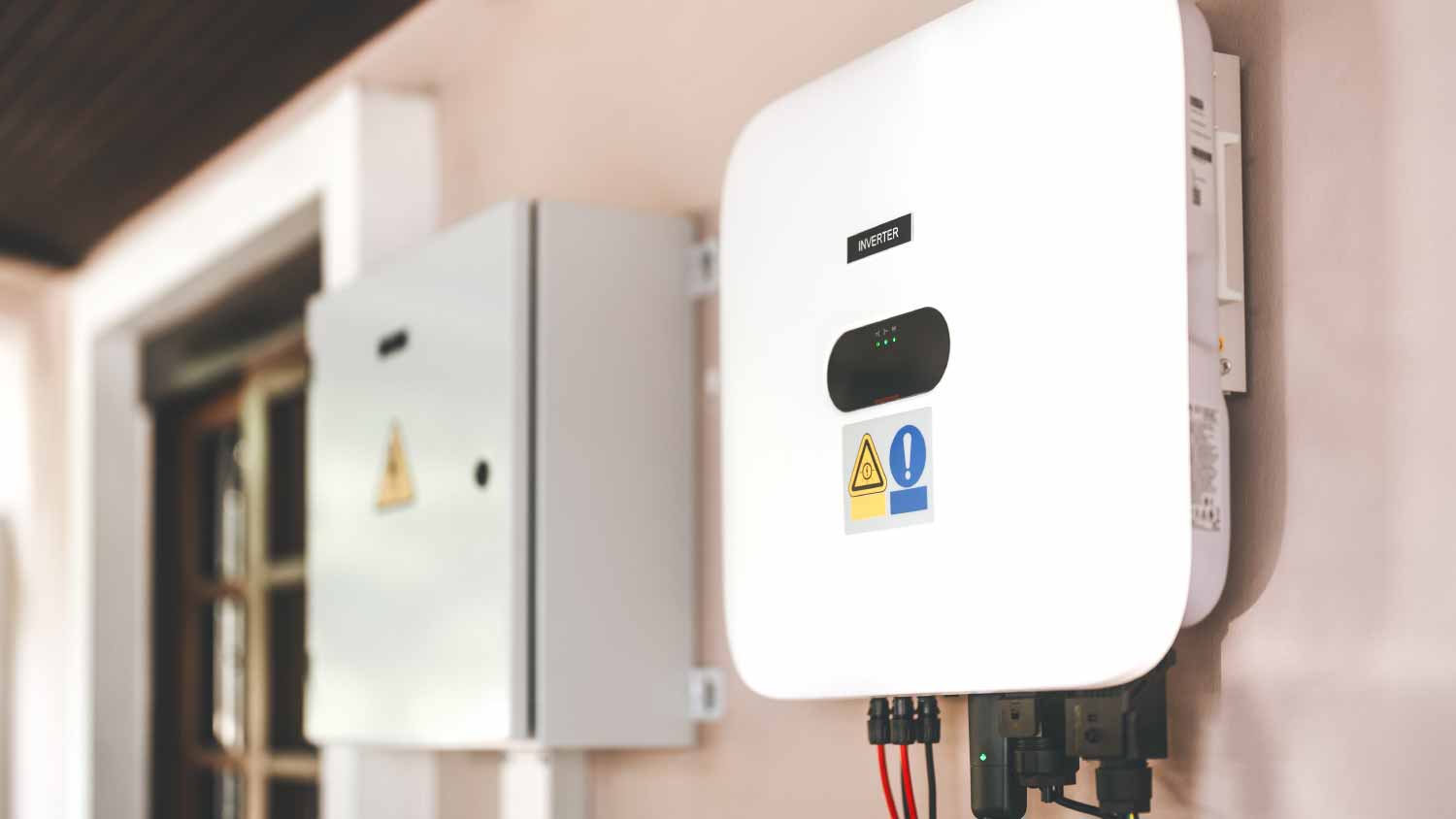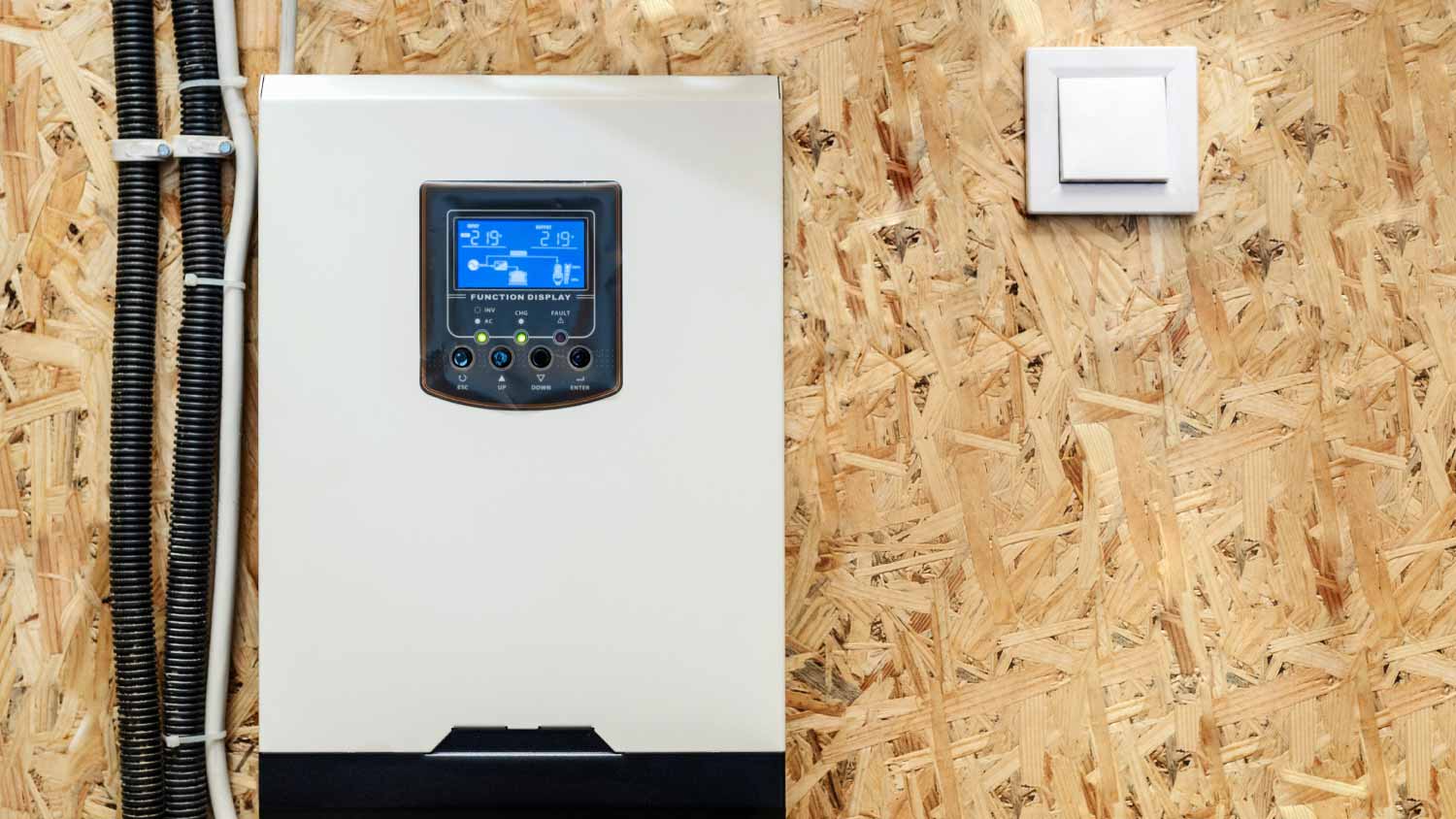The 4 Types of Solar Inverters: Pros, Cons, and How to Choose the Best One for Your Home
The right solar inverter will help your panels shine—even when the sun isn’t


Most homeowners focus on choosing the right type of solar panels, but solar inverters are almost equally important. This essential piece of equipment transforms the energy captured by your solar panels into energy you can use in your home. This complete guide covers the four types of solar inverters—including string and hybrid inverters, microinverters, and power optimizers—so you can pick the sunniest solution for your space.
What Is a Solar Inverter?
A solar inverter, also known as a solar power inverter or PV inverter, is a key component in almost all residential solar energy systems. When sunlight hits the solar cell in your solar panels, it creates direct current (DC) electricity. This type of current can only run in one direction and isn’t used in your home (though it’s used for some low-voltage appliances).
This is where the solar inverter steps in. As the current flows through the solar inverter, it’s transformed into alternating current (AC) electricity, which can change directions. This is the type of electricity used in your home.
A solar energy system has one, a handful, or several solar inverters depending on size of the system and the type of inverter. A local solar panel installer can help you choose the best option for your home. The inverter is often included in the cost of your system, but there are some benefits to choosing one type over another.
1. String Inverters

Most residential solar energy systems use string inverters. Several solar panels connect to a single string inverter, which converts their collective electricity. Most residential systems only need one inverter, but you might need up to three if you have a large system.
String inverters are the most affordable and straightforward solution, but they can struggle when one panel gets obstructed by shade. Think of it like a string of Christmas lights—if one light goes out, the rest of the string loses power, too. You’re limited to the output of the weakest panel.
| Pros | Cons |
|---|---|
| Lowest cost | Less reliable |
| Easy to replace and maintain | Struggles when panels are shaded |
| Works with batteries and power optimizers | Not ideal for panels facing different directions |
Best for:
Solar energy systems in full sunlight
Solar energy systems where all panels face the equator
2. Microinverters
Microinverters convert the individual energy from a single panel rather than the collective energy from several panels, helping prevent energy loss. If a panel is shaded or damaged, your system keeps rolling as usual and the other panels aren’t impacted.
While the cost of the solar inverter itself is relatively affordable, you’ll need one inverter for each solar panel. This can add 15% to 25% to the cost of your system. Microinverters are also harder to repair and replace and don’t work as well with a solar battery.
| Pros | Cons |
|---|---|
| Great for systems with shaded panels | Higher cost |
| System still works if an inverter fails | Difficult to maintain and replace |
| Easier to add more panels later down the line | Harder to install backup batteries |
Best for:
Solar panels that receive uneven amounts of sunlight
Grid-tied systems
Homeowners who plan to expand their system later down the line
3. Power Optimizers
Power optimizers aren’t like a traditional inverter. Rather than converting DC electricity into AC electricity, they help move DC power to a central string inverter. During the process, they regulate the current to optimize electrical output.
Power optimizers are a great addition for imperfect energy systems where some panels perform worse than the rest—whether your panels experience partial shade or you have an east-west roof orientation that receives less sunlight. They’re less expensive than microinverters but cost more than using a string inverter.
| Pros | Cons |
|---|---|
| Maximizes performance of each panel | Cost more than a string inverter |
| Mitigates power losses from shade and debris | Not always necessary |
| Allows for individual panel monitoring |
Best for:
Systems that combine panels with different wattages
Panels that face different directions
Panels in shady areas
4. Hybrid Inverters

A hybrid inverter combines a solar inverter and a solar battery in a single unit that converts the electricity created by your panels and stores the excess. Energy storage helps prevent energy losses during power outages and rainy days. It also allows homeowners to participate in a net metering program, where they can send unused energy back to the main power grid for a utility bill credit.
| Pros | Cons |
|---|---|
| Increases efficiency | Higher cost |
| Prevents power losses during outages | Struggles in shade |
| Works with net metering programs | Doesn’t work on every roof layout |
Best for:
Off-grid solar energy systems
Homeowners who can participate in net metering programs
Large energy systems
Areas prone to power losses
How to Choose the Right Type of Solar Inverter
Now that you know the types of solar inverters, how do you choose? There are a few things to consider when you start shopping:
Sunlight: If your panels don’t receive an equal amount of sunlight, you can use power optimizers or microinverters.
Orientation of panels: Ideally, your panels should face the equator (in the United States, that means your panels should face south). If some of your panels face a different direction, you can choose a microinverter or add power optimizers to maintain efficiency.
Wattage: Your solar inverter has to handle the wattage of your panels. Choose a solar inverter that's similar in size to the DC power rating of the panels it must support. You can use a solar panel inverter size calculator to help.
Grid-tied or off-grid systems: If you want your energy system to be independent of the main power grid, choose inverters that are the easiest to install alongside solar batteries or generators. A hybrid or string inverter will work best.
Efficiency: Efficiency varies from model to model, so weigh the efficiency and the potential savings with solar. If you need more efficiency to combat poor conditions, add power optimizers or choose microinverters.
Warranty: Most inverters come with a five- to 10-year warranty, but you might be able to extend it to 25 years. Keep in mind, the warranty for optimizers doesn’t always include the string inverter.
Energy use: If your home has lower energy usage, losses from partial shade or debris won’t not have as big of an impact. If you use a lot of energy, consider installing a hybrid inverter or several string inverters with a backup battery.
Cost: Weigh the potential long-term savings against the up-front cost. Savings are greater in areas with higher energy prices. On average, expect to spend $1,000 to $3,000 on the cost of solar inverters, though this is often included in the total price of your system.




















